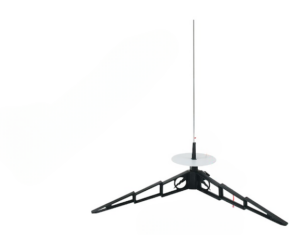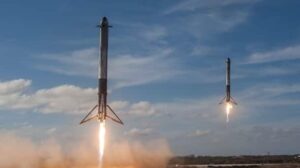
For a lot of rocketeers, there is the open question of what is a two-stage rocket. But it is a pretty cool technique that can give the rocket an extra booster to get them higher or in more real-world use cases can take us to space! So what is a two-stage rocket?
A two-stage rocket is a rocket that comes in two stages each that contains its own engines and propellant. These are stacked on top of or attached next to each other. The first stage is the largest and normally is the booster. Once out of fuel, it detaches from the rest of the rocket. The second stage is smaller once the first stage is complete and detached the second stage rockets engine starts. And continues the journey.
In this post, we will go through what is a two-stage rocket. Let’s get started!
What Is A Two-Stage Rocket?
As the name suggests a two-stage rocket is a rocket with two stages or sections. The first stage is the main body of the rocket, and the second stage is attached to the top of the first stage. Or it can be underneath it.
The first stage contains the bulk of the fuel and most of the weight of the rocket. The job of the first stage is to lift the rocket off the ground and get it moving fast enough that it can escape Earth’s gravity.
The second stage is much lighter than the first stage and contains less fuel. Its job is to continue pushing the rocket once the first stage has run out of fuel. This allows the rocket to reach higher altitudes and speeds until it finally reaches orbit.
In the case of model rockets, most model rockets except beginner or cheap rockets are two-stage rockets. The first stage is the booster, which contains the engine and fuel. The second stage is the payload, which carries the parachute or camera.
The stages of a rocket can be separated by a variety of methods, including motor ejection, pyrotechnic charges, or aerodynamic separation.
Two-stage rockets are more complex than single-stage rockets, but they offer several advantages. They are more efficient because the lighter second stage doesn’t have to carry the weight of the unused fuel from the first stage.
They’re also more versatile since different types of payloads can be carried by different types of second stages.

Why Do Rockets Have Two Stages?
Rockets have two stages so they can be more efficient and versatile. The first stage lifts the rocket off the ground and gets it moving fast enough to escape Earth’s gravity.
The second stage is much lighter and carries less fuel, but it continues pushing the rocket once the first stage has run out of fuel. This allows the rocket to reach higher altitudes and speeds until it finally reaches orbit.
What Is A Single-stage Rocket?
Single-stage rockets are relatively simple compared to two-stage rockets. They have one main body, which contains all the fuel and most of the weight of the rocket. The single stage must lift the entire rocket off the ground and get it moving fast enough that it can go as high as possible.
The downside of single-stage rockets is that they are less efficient than two-stage rockets because they have to carry the weight of the unused fuel with them as they fly.
They are also less versatile since they can only carry a limited amount of payload. However, single-stage rockets are simpler to build and fly, so they’re often used for model rockets.
Final Thoughts
Finally, to understand what a two-stage rocket is you just need to remember that it is a rocket that comes in two stages or sections each that contains its own engines and propellant. The first stage is the largest and is the booster. Once out of fuel, it detaches from the rest of the rocket, and the second stage rocket engine starts. And continues the journey.
Are you on Pinterest? Pin these!







